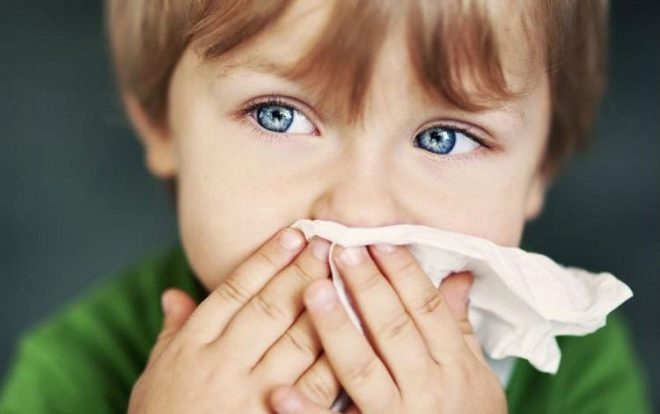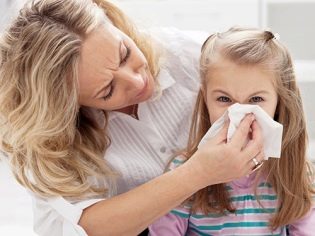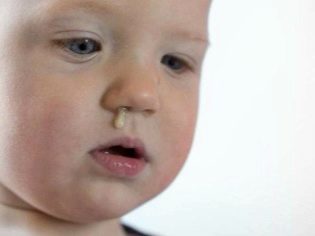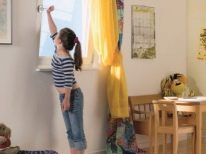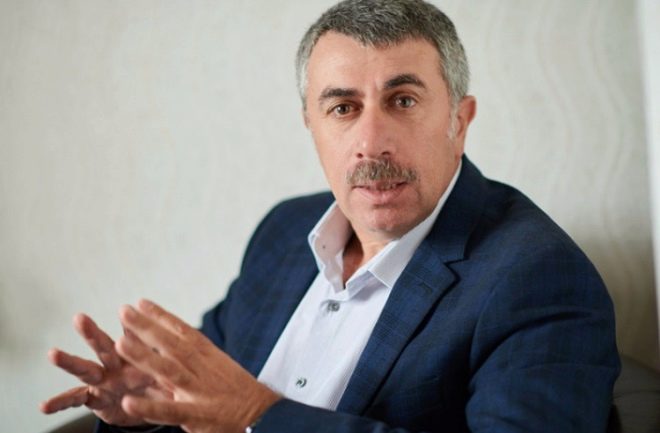Dr. Komarovsky about sinusitis in children
A runny nose in children is very common, but not everyone can be called sinusitis. Yevgeny Komarovsky, a famous pediatrician and TV host, tells his parents about the disease and how it can be treated in children.
What it is?
Respiratory diseases, according to Komarovsky, can be safely considered leaders among childhood diseases. And they are quite a lot. Sinusitis is an inflammatory process that occurs in the sinuses, called paranasal. It is caused by pathogenic bacteria or aggressive viruses that enter the body through the nose. Also, sometimes, the main reason is the transferred trauma or chemical burn of the upper respiratory tract.
Like most other diseases, sinusitis exists in two forms - acute or chronic, one or several sinuses of a child’s nose can be affected.
It is believed that the disease is most likely in children with nasal polyps or other structures, a curvature of the nasal septum.
Chronic puffiness of the nose occurs with allergic rhinitis or vasomotor rhinitis. Most often, this inflammation develops in children with reduced immunity, cystic fibrosis, Down syndrome, as well as babies born with cleft palate.
Symptoms
Acute sinusitis in a child is not so difficult to recognize: it is not just a runny nose in its classic sense, it is the discharge of nasal mucus with pus, indisposition, fever. When feeling the area of the sinuses, the child experiences painful discomfort. But the doctor makes an accurate diagnosis. Rhinoscopy shows edematous, enlarged mucous membrane, the presence of pus in the nasal conchs.
If the sinusitis is chronic, then such symptoms should not be expected, the symptoms are generally quite vague. Sometimes a child may complain of slight pain in the sinus area. But you can't fool the doctor - there will be constant swelling in the nose, the discharge from the spout will be thick. Often, nasal mucus begins to flow from the nasal passages along the back of the throat, which leads to the appearance of an unpleasant putrid bad breath. Coughing will sometimes occur, and odor perception and the ability to distinguish between flavors are almost always reduced.
Examination and Diagnosis
The doctor during the examination can only assume that the child has sinusitis. To confirm or deny this assumption can diagnostic measures. Thus, radiography of the sinuses reveals a thickening of the mucous membrane (up to 5–6 mm), as well as foci of darkening, suggesting mucus accumulation and inflammation.
Conducted seeding the contents of the nasal mucus to determine the causative agent of the inflammatory process.
A CT scan of the sinuses can provide more information, but CT is recommended not always and not for all children. Sometimes it is possible to manage only x-rays. A complete blood count is taken, which reveals a high white blood cell count and an increase in the erythrocyte sedimentation rate.
But conducting diaphanoscopy, which children's physicians often insist on, Komarovsky considers redundant, the accuracy and information content of such a survey, unfortunately, is low.
Important differences from flu, cold
A runny nose with ARVI and flu has important differences from nasal congestion in case of inflammation of the paranasal sinuses. Dr. Komarovsky recommends focusing on the following nuances.
- General symptoms: with flu there is a sore throat, headache, chills, fever, muscle aches. With sinusitis, there is no muscle pain, the temperature may rise slightly. The main difference is a runny nose. In case of influenza or ARVI, it usually takes the form of congestion with watery, transparent secretions of mucus from the nasal passages. When sinusitis thick green or yellowish mucus is secreted, very often it flows out on the back of the throat. When you touch the cheeks near the nose and forehead between the eyebrows with sinusitis, the child experiences unpleasant pain, pressure from the inside. With the flu does not happen.
- Disease duration: A child with flu feels better after 4–5 days after an acute onset of the disease. With sinusitis, symptoms can persist for a long time. It is recommended that you go to the doctor if symptoms persist for more than five days.
Therapy
Medications are used in the treatment of sinusitis and rhinosinusitis, sometimes there is a need for surgical intervention.
For treatment, the doctor usually prescribes:
- vasoconstrictor drops nasal for 3-5 days (to reduce swelling of the mucous membrane);
- antihistamines (if the patient has allergic prerequisites and for help in reducing the swelling of the mucous membranes);
- if acute sinusitis, local and systemic antibiotics are recommended.
It so happens that drug treatment is ineffective, and the sinuses are not restored after all the measures recommended by the doctor. Then for the outflow of accumulated nasal contents with pus, it is recommended washing the sinuses and puncture the frontal or maxillary sinuses.
If this does not help, conduct a full-fledged rhino-operation.
To treat rhinosinusitis, Dr. Komarovsky advises exclusively under medical supervision.
Self-treatment and treatment of folk remedies are completely excluded. Sinuses cannot be heated, warming compresses cannot be done - this will contribute to the spread and enhancement of the inflammatory process. Therefore, inhalations about loved moms should be forgotten.
Do not give up and antibiotics - in the case of purulent sinusitis without them in therapy can not do, because the bacteria multiply rapidly.
Parents can facilitate the discharge of the contents of the sinuses by regular rinsing of the nose. For these purposes, you can choose any of the numerous solutions with sea water that exist in pharmacies or prepare a salt solution at home on your own (a teaspoon of ordinary salt per 1 liter of boiled water beforehand). The more often the baby will wash the spout, the better.
During treatment, parents should remember that the dried air in the room where the baby lives, the heat, contribute to the drying up of mucus in the upper respiratory tract. This means that the likelihood of severe complications also increases. Therefore, it is necessary to ventilate the room, clean the floors, humidify the air with a special device, which is called humidifier, to the level of 50–70%. If there is no humidifier, you can hang wet diapers or sheets, towels on the battery or on the rope. Liquid from them will evaporate and moisten the air in the house. The air temperature in the nursery, even in winter, should not exceed 19–21 degrees.
Do not forget about the abundant warm drink - it helps in the task of liquefying and removing nasal mucus. If there is no high temperature, it is necessary to send the child to walk outside - he needs fresh air.
If the child is allergic, the treatment will not bring tangible results as long as the child continues to contact with the allergen. Parents should be puzzled that there were no large soft toys and carpets accumulating dust in the house, books were standing in the closet behind the glass. The floors are washed, they do it every day, but they do not use detergents. Things and bed linen wash hypoallergenic powder and additionally rinsed.
Evgeny Komarovsky encourages parents to be more attentive with vasoconstrictor drugs - they can not be used for more than five days. They develop persistent drug addiction, mucous membrane can atrophy. Use in the specified time frame with compliance with all recommendations of the attending physician can only those forms of vasoconstrictor drugs that are suitable for the child by age.
On a note.
- Famous pediatrician advises parents who treat children with sinusitis to wash their children's noses as often as possible. While the child breathes through his mouth, the likelihood that not only the nasal secretions, but also the mucus in the bronchi and lungs will dry up will increase, which will increase the likelihood of the onset of a pulmonary or bronchial disease.
- Encourage active child play in the open air. They allow the child to get more oxygen, because with nasal congestion, all organs and systems experience a certain oxygen starvation.
- Most traditional medicine recipes for sinusitis are not just useless, but can significantly harm. Herbal remedies, honey-based remedies may themselves be allergenic, which does not contribute to the reduction of mucosal edema.
Dr. Komarovsky tells about the reasons for the formation of snot and their treatment in the next video.

